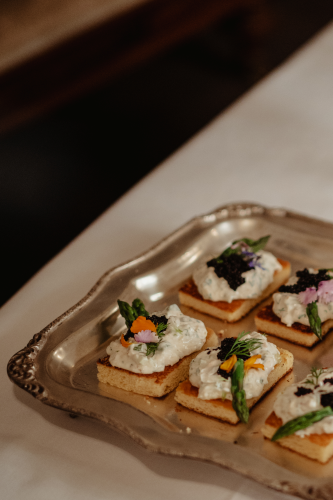Look in any home kitchen or pantry in Argentina, and you’ll find that jar or tin of dulce de leche, generally half empty and showing telltale signs of stickiness from much use. This silky, sweet sauce goes by many names: “manjar” in Chile, ‘arequipe’ in Colombia, ‘manjar blanco’ in Peru. But it is the well-known Argentine name of dulce de leche that now dominates the culinary scene. While the sweet-toothed among us may have been in on the dulce de leche secret for a while, in recent years this South American indulgence has spread globally and allowed us all to enjoy its rich and delectable sweetness.
The literal translation of this time-honoured moniker is “sweetness of milk”. The gastronomical translation? That would be creamy, velvety, smooth, rich and oh-so-delicious! And now that I’ve run out of adjectives, you may well ask, what exactly is dulce de leche?
It is a thick and sugary caramel-like sauce that is made by slowly heating sweetened milk. While it may often be likened to caramel, there are distinct differences. Dulce de leche enjoys its own unique flavour profile, produced by the Maillard reaction. Rather than literal caramelisation, the slow and steady browning gives us a lovely, nutty, mellow taste, more akin to toffee or butterscotch. (Homemade Dulce de Leche)
Dulce de leche is, quite frankly, the happy essence of Argentina. Found in large selections in every supermarket and corner convenience store, (and needless to say, in Campus & Co!) dulce de leche has easily found its way into every meal of the day, a staple in the pantry and on the kitchen table. It will show up at breakfast, spread on warm toast, drizzled over pancakes or waffles, or onto that daily bowl of oatmeal. A teaspoon stirred into that first cup of coffee takes your caffeine boost to an entirely new dimension. It can be added to a vinaigrette to balance the acidity and surprise the taste buds. This gooey treat is arguably the best filling in a doughnut, the dip for warm churros, the drizzle over your popcorn (Popcorn Recipe) and the sauce over a typical flan which, incidentally, is one of the most popular Latin desserts. Then, of course, there is the iconic Argentine confection, alfajores; delightful sandwich cookies which prominently feature a lavish amount of dulce de leche filling.
As with most culinary masterpieces, there is some mystery and controversy surrounding the origin and history of dulce de leche. Both Argentina and Uruguay claim to be the “country of origin” of this regional staple. But it seems we can all agree on one thing; it was discovered by a lucky (for us!) kitchen mistake. Apparently, way back in the fog of history, a distracted maid worked in a hot kitchen, for either Napoleon or Argentine General Manuel de Rosas, depending on which legend you believe. She was busy cooking milk and sugar in order to prepare some desserts. Unfortunately (for her!), she was called away amidst her cooking. Upon her return, she discovered that the milk had been slowly transformed into the thick, brown, sweet goo we now lovingly know as dulce de leche.
Once you’ve experienced this indulgent creaminess, the next step becomes simple: finding endless ways to incorporate it into your family menus. Dulce de leche can be spread over a pavlova like a guest of honour, included in a cherished recipe such as Banoffee Pie, over ice cream, or oozing from those light Argentine pastries called “facturas”. Or, as my personal favourite, (to which many partakers could relate) scooped directly from that jar in the pantry and licked enthusiastically from the spoon. Simply put, this is bliss, on a spoon!








